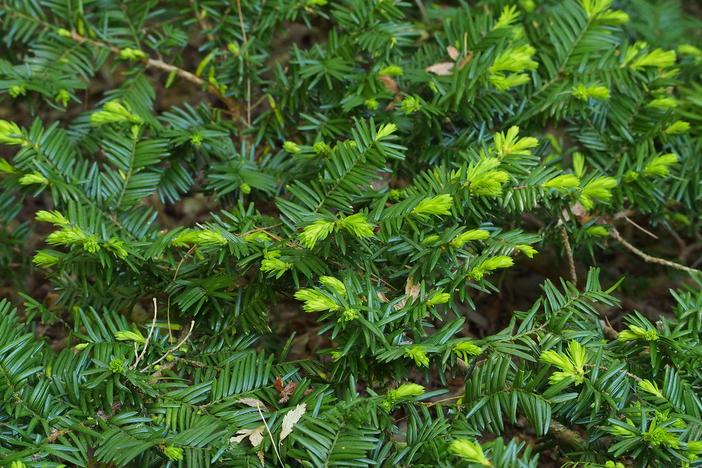Dwarf Japanese Yew
(Taxus cuspidata var. nana)
Dwarf Japanese Yew (Taxus cuspidata var. nana)
/
/

harum.koh
CC BY-SA 2.0
Image By:
harum.koh
Recorded By:
Copyright:
CC BY-SA 2.0
Copyright Notice:
Photo by: harum.koh | License Type: CC BY-SA 2.0 | License URL: https://creativecommons.org/licenses/by-sa/2.0/ | Uploader: harum.koh | Publisher: Flickr



















Estimated Native Range
Summary
Taxus cuspidata var. nana, commonly known as Dwarf Japanese Yew, is an evergreen shrub native to the understory of forests, wooded slopes, and valleys in Japan and Korea. contrary to its common name, it can grow to a height of 9.75-20 feet (3-6 meters) and a width of 15-36 feet (4.6-11 meters), although it is often kept much smaller in cultivation. The Dwarf Japanese Yew has a dense, compact growth habit with dark green needles that provide year-round interest. Its flowers are inconspicuous, with male flowers being pale yellow and female flowers green, blooming in the spring. The plant also produces red, berry-like arils that are attractive but toxic.
The Dwarf Japanese Yew is valued for its tolerance of heavy pruning, making it an excellent choice for hedges, topiary, or foundation plantings. It is also used in Asian-inspired garden designs and as a bonsai specimen. This yew prefers well-drained soils and can tolerate a range of conditions from full sun to part shade. It is relatively low-maintenance but requires protection from strong winds and heavy snow, which can damage the branches. While generally disease-resistant, it can be susceptible to root rot if planted in poorly drained soils. Overwatering should be avoided to prevent this issue.CC BY-SA 4.0
The Dwarf Japanese Yew is valued for its tolerance of heavy pruning, making it an excellent choice for hedges, topiary, or foundation plantings. It is also used in Asian-inspired garden designs and as a bonsai specimen. This yew prefers well-drained soils and can tolerate a range of conditions from full sun to part shade. It is relatively low-maintenance but requires protection from strong winds and heavy snow, which can damage the branches. While generally disease-resistant, it can be susceptible to root rot if planted in poorly drained soils. Overwatering should be avoided to prevent this issue.CC BY-SA 4.0
Plant Description
- Plant Type: Shrub
- Height: 9.75-20 feet
- Width: 15-36 feet
- Growth Rate: Slow
- Flower Color: N/A
- Flowering Season: Non-Flowering
- Leaf Retention: Evergreen
Growth Requirements
- Sun: Full Sun, Part Shade
- Water: Medium
- Drainage: Medium, Slow
Common Uses
Border Plant, Hedges, Low Maintenance, Potted Plant, Street Planting
Natural Habitat
Native to the understory of forests, wooded slopes, and valleys in Japan and Korea
Other Names
Common Names: Dwarf Japanese Yew , Nana Japanese Yew
Scientific Names: Taxus cuspidata var. nana hort. ex , Taxus caespitosa var. angustifolia , Taxus cuspidata f. nana , Taxus cuspidata subsp. nana , Taxus cuspidata var. compacta , Taxus cuspidata var. nana hort. , Taxus umbraculifera var. nana
GBIF Accepted Name: